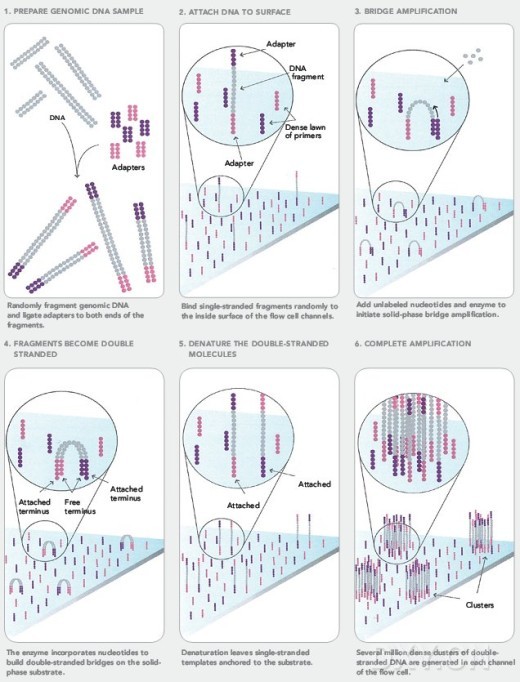solexa sequencing
互联网
technology: illumina sequencing technology
This breakthrough platform is based on massively parallel sequencing of millions of fragments using our proprietary reversible terminator-based sequencing chemistry. This novel sequencing technology, together with the Illumina Genome Analyzer, offers a highly robust, accurate, and scalable system that sets a new standard for productivity, cost-effectiveness, and accuracy among next-generation sequencing technologies.
Illumina Sequencing technology relies on the attachment of randomly fragmented genomic DNA to a planar, optically transparent surface. Attached DNA fragments are extended and bridge amplified to create an ultra-high density sequencing flow cell with ≥50 million clusters, each containing ~1,000 copies of the same template. These templates are sequenced using a robust four-color DNA sequencing-by-synthesis technology that employs reversible terminators with removable fluorescent dyes. This novel approach ensures high accuracy and true base-by-base sequencing, eliminating sequence-context specific errors and enabling sequencing through homopolymers and repetitive sequences.
High-sensitivity fluorescence detection is achieved using laser excitation and total internal reflection optics. Short sequence reads are aligned against a reference genome and genetic differences are called using specially developed data analysis pipeline software. Alternative sample preparation methods allow the same system to be used for a range of applications including gene expression, small RNA discovery, and protein-nucleic acid interactions.
After completion of the first read, the templates can be regenerated in situ to enable a second >36 bp read from the opposite end of the fragments. The Paired-End Module directs the regeneration and amplification operations to prepare the templates for the second round of sequencing. First, the newly sequenced strands are stripped off and the complementary strands are bridge amplified to form clusters. Once the original templates are cleaved and removed, the reverse strands undergo sequencing-by-synthesis. The second round of sequencing occurs at the opposite end of the templates, generating >36 bp reads for a total of >3 Gb of paired-end data.








